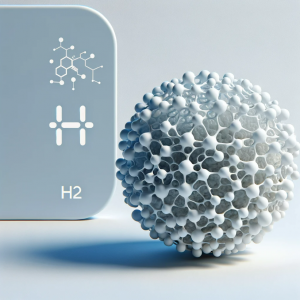New steps in hydrogen storage
A recent study could open the door to the future of hydrogen storage. A research group from the Chemistry Department of Korea’s Ulsan National Institute of Science and Technology (UNIST) has discovered a porous material, based on magnesium hydride, that can store hydrogen much more efficiently than current methods.
This material has the peculiarity of having very small pores and a negatively charged internal surface that allows hydrogen to be stored at surprisingly high densities, almost double the density of liquid hydrogen. Imagine this density like a crowd of people at a concert, where everyone finds their place without pushing others, thanks to the unique structure of this material.
Hydrogen, an extremely light and difficult to store element, finds a home in these pores, adopting a very orderly formation. Some hydrogen molecules are free to spin, while others line up perfectly, interacting with the material in a very specific way. This discovery is not just a technical achievement; opens the door to very diverse practical applications, such as vehicles that can travel longer distances without needing to refuel as often, or renewable energy technologies that can store hydrogen more efficiently for use when the sun is not shining or the wind does not blow.
This advance, published in the journal Nature Chemistry, could be a game-changer in energy storage, making hydrogen, a clean and green fuel, much more practical and accessible.








